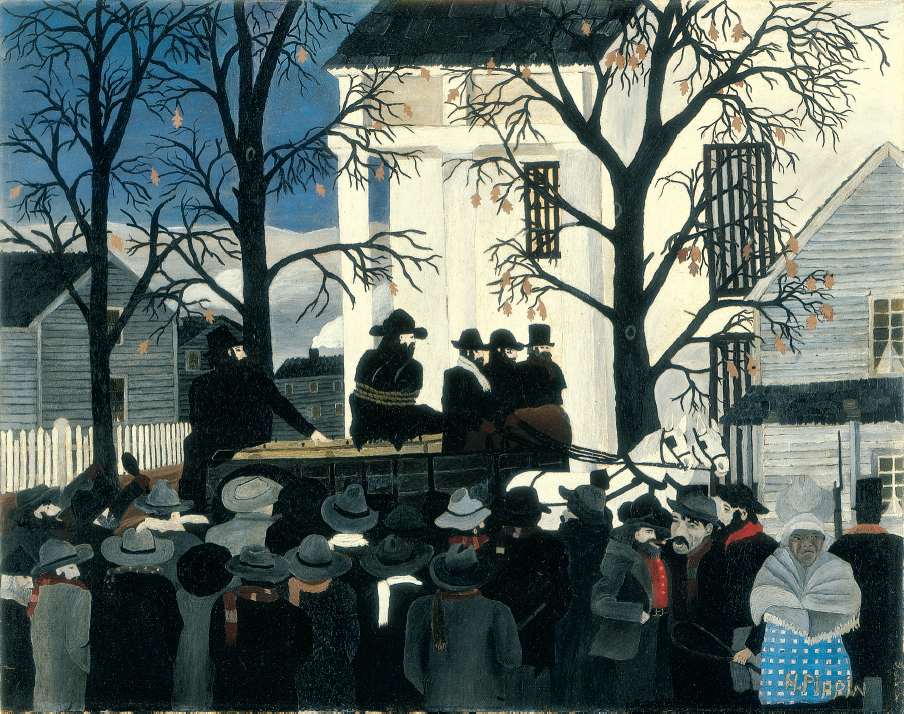John Brown’s Raid
Printed Page 414
Section Chronology
John Brown, an ardent abolitionist and the man who instigated the massacre at Pottawatomie, Kansas, in 1856, took his war against slavery into the South. On October 16, 1859, he and twenty-one men, including five African Americans, invaded Harpers Ferry, Virginia. His band quickly seized the town’s army and rifle works, but the invaders were immediately surrounded, first by local militia and then by Colonel Robert E. Lee, who commanded the U.S. troops in the area. When Brown refused to surrender, federal soldiers charged with bayonets. Seventeen men, two of whom were slaves, lost their lives. Although a few of Brown’s raiders escaped, federal forces killed ten and captured seven, among them Brown.

For his attack on Harpers Ferry, John Brown stood trial for treason, murder, and incitement of slave insurrection. “To hang a fanatic is to make a martyr of him and fledge another brood of the same sort,” cautioned one newspaper, but on December 2, 1859, Virginia executed Brown. In life, he was a ne’er-do-well, but, as the poet Stephen Vincent Benét observed, “he knew how to die.” Brown told his wife that he was “determined to make the utmost possible out of a defeat.” He told the court: “If it is deemed necessary that I should forfeit my life for the furtherance of the ends of justice, and mingle my blood further with the blood of … millions in this slave country whose rights are disregarded by wicked, cruel, and unjust enactments, I say, let it be done.”
After Brown’s execution, Americans across the land contemplated the meaning of his life and death. Some Northerners celebrated his “splendid martyrdom.” Ralph Waldo Emerson likened Brown to Christ when he declared that Brown made “the gallows as glorious as the cross.” Most Northerners did not advocate bloody rebellion, however. Like Lincoln, they concluded that Brown’s noble antislavery ideals could not “excuse violence, bloodshed, and treason.”
Still, when northern churches marked John Brown’s hanging with tolling bells, hymns, and prayer vigils, white Southerners contemplated what they had in common with people who “regard John Brown as a martyr and a Christian hero, rather than a murderer and robber.” Georgia senator Robert Toombs announced solemnly that Southerners must “never permit this Federal government to pass into the traitorous hands of the black Republican party.”